Are you looking for the best places to go magnet fishing? Look no further! Magnet fishing is an exciting hobby that involves searching bodies of water for metal objects using a strong magnet attached to a rope. With the right equipment and a bit of luck, you never know what kind of treasures you might uncover. However, not all bodies of water are created equal when it comes to magnet fishing. In this article, we’ll take a closer look at some of the top locations where to magnet fish.
Table of Contents
Bridges and Docks

Bridges and docks are some of the most popular locations for magnet fishing enthusiasts. These areas are known to be high-traffic zones, with pedestrians and vehicles often crossing over bridges, while boats are constantly passing through under them. The bustling activity in these locations means that there is a high probability of people accidentally dropping or losing items in the water. As such, bridges and docks have become some of the most sought-after magnet fishing spots for hobbyists.
Bridges and docks are also typically constructed with metal, which makes them prime locations for finding lost metal items. The metal structure of bridges and docks can create an accumulation of various metallic objects in the water below. Magnet fishing in these locations can yield various metal objects, including coins, keys, phones, jewelry, and even discarded fishing gear.
One of the best times to magnet fish around bridges and docks is during the low tide. As the water levels recede, the uncovered areas can reveal various metallic objects, making them easier to find. Low tide also means that the water is calmer, which makes it safer to magnet fish in these areas.
However, it’s important to note that magnet fishing around bridges and docks can be dangerous. Boats can pass by at high speeds, creating waves that can quickly pull in and submerge magnet fishing gear. Therefore, it’s essential to stay aware of the surroundings and avoid areas where boats are passing by. It’s also crucial to use the right kind of equipment when magnet fishing in these areas. Using a rope that’s too long or too short can lead to snags, which can damage the magnet or even cause injury.
Moreover, it’s crucial to check local laws and regulations (UK & Canada) before magnet fishing around bridges and docks. Some cities and towns may have laws that prohibit magnet fishing in certain areas. Obtaining permission from the relevant authorities before embarking on a magnet fishing trip can prevent legal issues.
In conclusion, bridges and docks are fantastic locations for magnet fishing, thanks to their high-traffic and metal construction. These areas can yield a plethora of metal objects that hobbyists can collect and potentially sell or keep as souvenirs. However, it’s important to stay safe, use the right equipment, and be aware of local laws and regulations before embarking on a magnet fishing adventure around bridges and docks.
Historic Sites
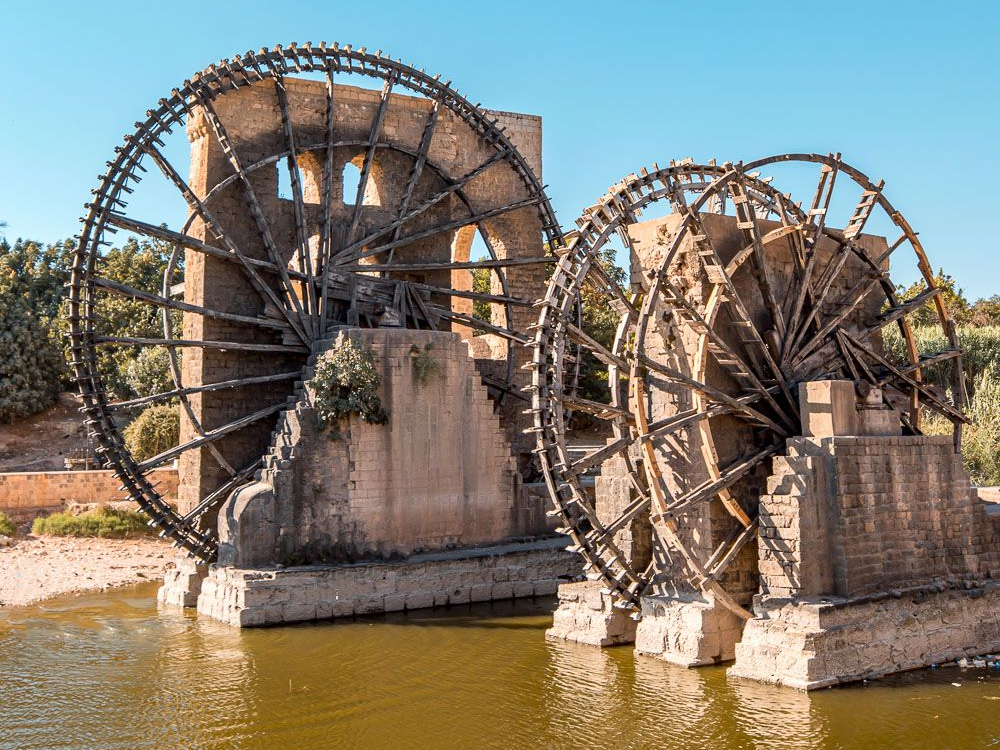
Historic sites have always been fascinating to magnet fishing enthusiasts. These sites have a rich history and are often a treasure trove of hidden artifacts. From old forts and battlefields to shipwrecks, these locations offer a unique opportunity for magnet fishing enthusiasts to uncover the secrets of the past.
Old forts and battlefields are excellent locations for magnet fishing, especially if they have been around for a long time. These sites have seen numerous battles and skirmishes over the years, and it’s not uncommon to find various metal objects buried in the ground or hidden in the water nearby. Cannonballs, bullets, bayonets, and other metal objects used in battles can be found in these locations, making them prime spots for magnet fishing. Furthermore, metal detectors can also be used to locate these artifacts buried in the ground.
Shipwrecks are also excellent locations for magnet fishing. These shipwrecks can be found in various bodies of water, from rivers and lakes to oceans. They can be centuries old and offer a glimpse into the past. As ships sink, their cargo and other metal objects can become dislodged and scattered in the water. Therefore, it’s not uncommon to find coins, jewelry, and other metallic objects from the shipwreck, making it an exciting spot for magnet fishing enthusiasts.
However, before embarking on a magnet fishing trip to historic sites, it’s essential to do your research and obtain the necessary permits. Some historic sites are protected by law, and magnet fishing may not be allowed in certain areas. As such, it’s important to obtain permission from the relevant authorities before magnet fishing in these locations. Additionally, it’s crucial to stay aware of local regulations and restrictions as well.
Another important consideration when magnet fishing at historic sites is to be respectful of the area and its history. These sites hold a significant value for historians, archaeologists, and the community. It’s important not to disturb or damage any artifacts or structures while magnet fishing. Being mindful of the environment and ensuring that no damage is done can help to preserve the site for future generations.
In conclusion, historic sites are excellent locations for magnet fishing enthusiasts to explore. From old forts and battlefields to shipwrecks, these locations are a treasure trove of artifacts and provide a glimpse into the past. However, it’s important to obtain the necessary permits, respect the area and its history, and stay aware of local regulations when magnet fishing at historic sites. With the right equipment and proper research, magnet fishing at historic sites can be an exciting and rewarding experience.
Canals and Locks
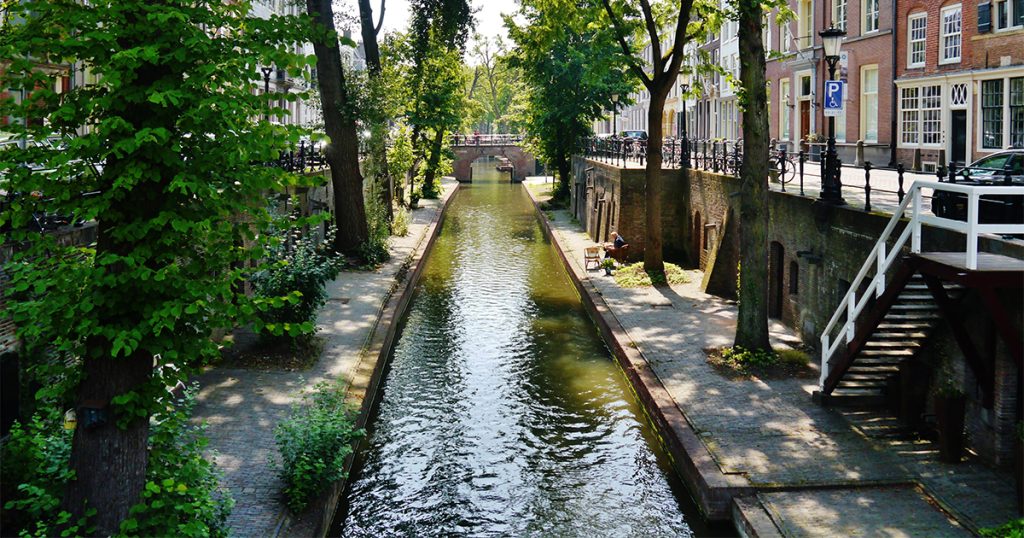
Canals and locks may not be the first places that come to mind when considering magnet fishing locations, but they can provide an exciting and fruitful experience for enthusiasts. Canals are often constructed with metal walls and contain a wealth of items that have been dropped, thrown, or lost in the water. Meanwhile, locks are designed to hold boats in place with large metal gates, providing an excellent opportunity for magnet fishing enthusiasts to uncover valuable items.
When magnet fishing in canals and locks, it’s important to keep safety in mind. These locations can be deep and murky, so it’s important to exercise caution and wear the appropriate safety gear. Additionally, it’s important to avoid areas where boats are passing by and to be mindful of any other water traffic.
Canals and locks can be excellent locations for magnet fishing, as they often see a lot of foot traffic and can contain a variety of objects. It’s not uncommon to find coins, jewelry, tools, and other metal objects that have been lost or discarded in the water. The items may have been in the water for a long time, and some may have acquired a unique patina or rust, giving them a vintage or historical appeal.
It’s worth noting that some canals and locks may be off-limits to magnet fishing. Before embarking on a magnet fishing trip, it’s essential to check local regulations and obtain the necessary permits if required. Additionally, it’s important to respect the environment and to ensure that no damage is done to any structures or ecosystems in the area.
One benefit of magnet fishing in canals and locks is that these locations are often located in urban areas, making them accessible to a wider range of enthusiasts. They are also usually easy to navigate, as they often follow a straight path, which means that a lot of ground can be covered in a relatively short amount of time.
In conclusion, canals and locks can be excellent locations for magnet fishing enthusiasts to explore. They contain a wide variety of metal objects, and their urban location and ease of navigation make them accessible to a wide range of enthusiasts. However, it’s important to keep safety in mind, check local regulations, and respect the environment when magnet fishing in these locations. With the right equipment and proper research, magnet fishing in canals and locks can be an exciting and rewarding experience.
Beaches and Shorelines

Magnet fishing on beaches and shorelines can be a fun and exciting way to discover hidden treasures that have been washed up by the waves. The shifting tides and storms can cause objects to become dislodged from their original location and carried to the shoreline. This means that beaches and shorelines can be great locations to search for lost or forgotten items that may have been lost at sea.
One of the most important things to keep in mind when magnet fishing on beaches is safety. Sharp objects, such as broken glass or rusted metal, can pose a serious risk to you and other beach-goers. Be sure to wear sturdy gloves and shoes, and keep an eye out for any potentially dangerous objects.
Another important factor to consider when magnet fishing on beaches is the tide. It’s important to check the tide schedule before heading out to the beach, as some areas may be inaccessible during high tide. Additionally, strong currents can make it difficult to maintain a grip on your magnet, so be sure to choose a spot where the water is relatively calm.
When searching for lost treasures on the beach, it’s important to move slowly and methodically. The beach is a vast area, and it’s easy to miss things if you’re not paying close attention. Try to focus on areas where people tend to congregate, such as around lifeguard stands or beach volleyball courts.
Finally, it’s important to be respectful of any rules and regulations in place when magnet fishing on beaches. Some beaches may have restrictions on the use of metal detectors or magnets, and it’s important to follow these rules to avoid fines or other penalties. Additionally, be sure to properly dispose of any garbage or debris you may come across while magnet fishing on the beach.
Overall, beaches and shorelines can be fantastic locations for magnet fishing, offering the potential for exciting discoveries and a fun day at the beach. Just be sure to stay safe and follow any rules and regulations in place to ensure a positive experience for everyone involved.
Rivers and Creeks
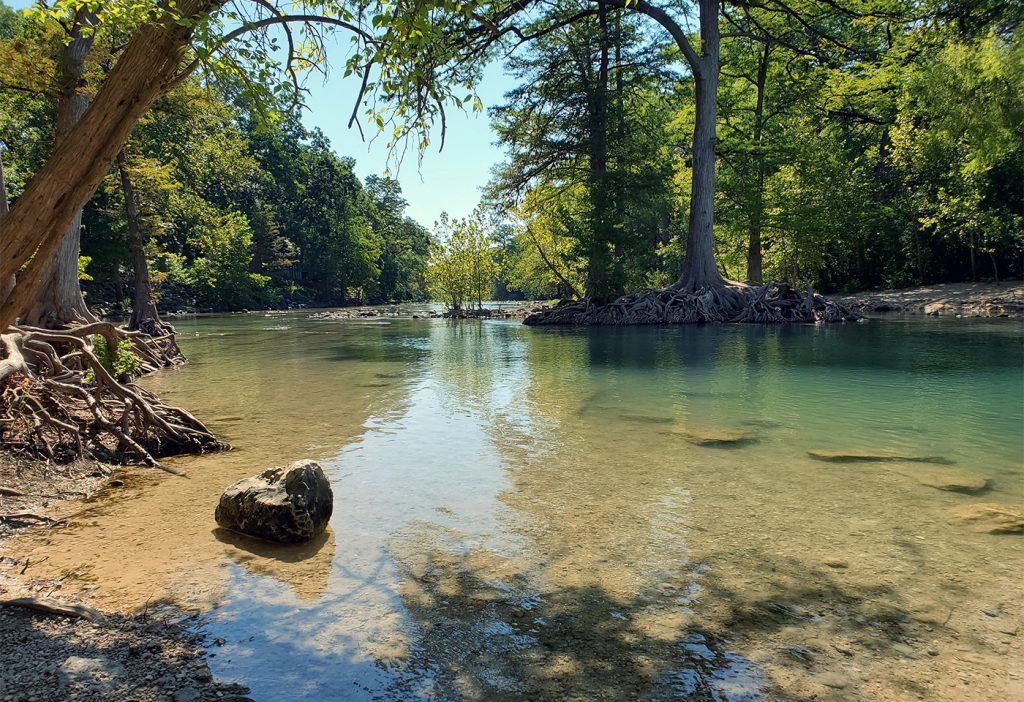
Magnet fishing in rivers and creeks can be an enjoyable and rewarding experience for hobbyists looking for an adventure. These bodies of water offer a wide range of potential finds, from old coins and jewelry to lost tools and even historical artifacts. The key to success when magnet fishing in rivers and creeks is to choose the right location and technique.
One of the benefits of magnet fishing in rivers and creeks is the amount of traffic that occurs in these areas. People often fish or participate in other water activities in rivers and creeks, which can lead to accidental losses of items that can be caught with a magnet. Additionally, rivers and creeks often run through areas that were once inhabited, such as old settlements or industrial sites, which increases the likelihood of finding historical artifacts or relics.
To find the best location for magnet fishing in a river or creek, look for areas where people are most active. This could be near popular fishing spots, boat ramps, or areas with a lot of foot traffic. Bridges and areas around dams can also be great locations to magnet fish, as objects are more likely to be lost or dropped in these areas. It’s also important to note that some rivers and creeks may have specific rules and regulations regarding magnet fishing, so be sure to check with local authorities before heading out.
When magnet fishing in rivers and creeks, it’s important to stay safe and avoid any areas with strong currents or deep water. It’s also important to be mindful of any wildlife or aquatic plants in the water that could be damaged by the magnet. Consider wearing waterproof boots or waders to protect yourself from the water and any potential hazards.
In terms of equipment, a strong magnet with a high weight capacity is necessary for magnet fishing in rivers and creeks. It’s also important to have a sturdy rope that can withstand the weight of any objects that are caught. Some magnet fishing enthusiasts also use a grappling hook or fishing net to retrieve larger items from the water.
Overall, magnet fishing in rivers and creeks can be a fun and exciting hobby with the potential for some amazing finds. Just remember to stay safe, check local regulations, and choose the right location to increase your chances of success.
Quarries and Mines
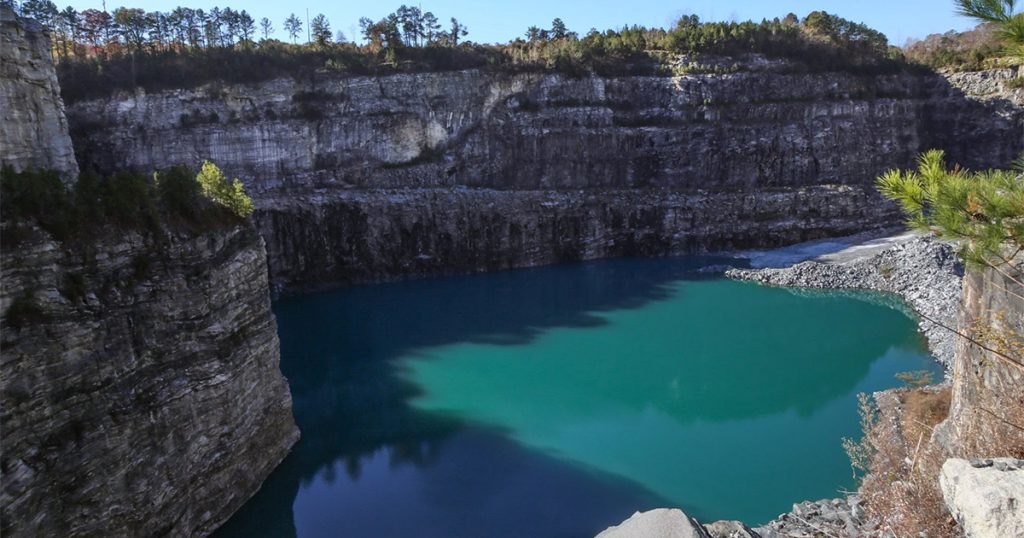
Quarries and mines can be a unique and rewarding location for magnet fishing. These sites are rich in history and can contain all kinds of metal objects that have been discarded or lost over the years. Quarries were once active sites of extraction for various minerals and rocks, and the remnants of the equipment used can often be found submerged in the water. Meanwhile, abandoned mines may contain mining tools and equipment, old rail tracks, and even remnants of old vehicles used for transportation.
However, before attempting to magnet fish at a quarry or mine, it is important to obtain permission from the owner and ensure that it is safe to do so. Abandoned quarries and mines can pose potential hazards such as unstable ground, sharp rocks, and deep water. In some cases, these areas may also contain dangerous chemicals and heavy metals, making it essential to wear protective gear and exercise caution.
When magnet fishing in a quarry or mine, it is important to use the right equipment. A strong magnet is necessary to pull up heavier objects such as mining tools and machinery, and a grappling hook can be useful for items that are too heavy to be lifted by the magnet alone. Additionally, it is important to be mindful of the environment and avoid disrupting any wildlife or plant life.
Quarries and mines can be found all over the world and offer a unique opportunity for magnet fishing enthusiasts to uncover rare and valuable objects. By doing some research and obtaining permission, you can safely explore these historic sites and potentially uncover a piece of history that has been lost for years.
Ponds and Lakes
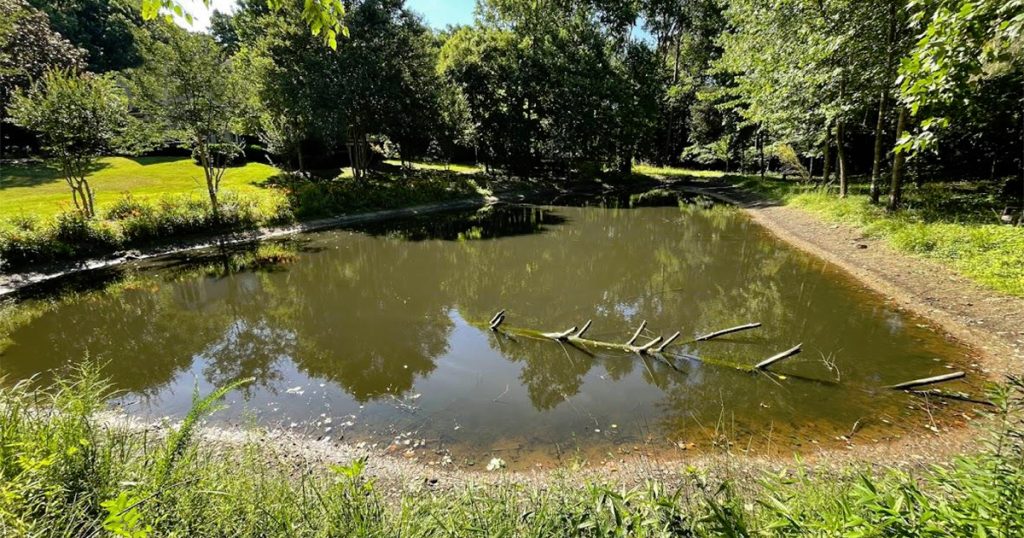
Magnet fishing at ponds and lakes can be a fun and rewarding experience for those looking to uncover lost treasures. These bodies of water can be great locations for magnet fishing, as anglers and other visitors to the area may accidentally drop metal objects into the water.
One of the benefits of magnet fishing at ponds and lakes is the variety of items that can be found. In addition to fishing lures, hooks, and sinkers, you may also find coins, jewelry, and other small metal objects. Some lakes and ponds may also have underwater structures, such as docks or piers, which can be good spots to search for lost items.
When magnet fishing at a pond or lake, it’s important to obtain any necessary permits and follow any rules or regulations in place. For example, some areas may be off-limits for fishing or have specific rules regarding the use of magnets. Additionally, it’s important to be mindful of any potential hazards in the water, such as sharp objects or strong currents.
To increase your chances of finding valuable items while magnet fishing at a pond or lake, it can be helpful to focus on areas where people tend to congregate, such as around boat launches or popular fishing spots. It can also be beneficial to search during low-traffic times, such as early in the morning or during the week, when fewer people are around.
While magnet fishing at a pond or lake can be a fun and exciting hobby, it’s important to be respectful of the environment and to dispose of any trash or debris properly. This can help to keep the water clean and safe for both aquatic life and other visitors to the area.
Overall, ponds and lakes can be great locations for magnet fishing, offering the opportunity to uncover a variety of lost items and potentially even valuable treasures. By following the necessary guidelines and staying safe while on the water, magnet fishing at a pond or lake can be a rewarding experience for hobbyists of all levels.
Industrial Sites

Magnet fishing at industrial sites can be a fascinating and exciting experience for those who enjoy exploring abandoned and forgotten places. These locations are rich in history and offer a unique opportunity to uncover valuable metal objects that may have been discarded or lost over time.
When it comes to industrial sites, there are many different types of locations that can be great for magnet fishing. For example, old factories and manufacturing plants often contain all sorts of metal objects, including tools, machinery, and even old vehicles. Similarly, warehouses and storage facilities may contain discarded or lost metal objects such as shipping containers, storage racks, and shelving units.
However, it’s important to be mindful of any potential hazards when magnet fishing at industrial sites. Chemicals and other hazardous materials may be present, and there may be heavy machinery or other equipment that poses a danger to magnet fishers. Therefore, it’s important to obtain any necessary permits and to follow any rules or regulations that are in place to ensure your safety.
One thing to keep in mind when magnet fishing at industrial sites is that the objects you find may have historical significance. For example, you may uncover machinery or tools that were used in the manufacturing process many years ago. If you’re interested in the history of the site you’re exploring, it can be a good idea to do some research beforehand to learn more about the types of objects you may encounter and their historical significance.
Overall, magnet fishing at industrial sites can be a thrilling and rewarding experience for those who are interested in uncovering forgotten relics from the past. However, it’s important to prioritize safety and to obtain any necessary permits and follow all regulations to ensure a safe and enjoyable experience.
In conclusion, magnet fishing can be an exciting and rewarding hobby that can lead to some incredible discoveries. With the right equipment and a bit of luck, you never know what kind of treasures you might uncover in the water. However, it’s important to be mindful of safety and local regulations when searching for locations to magnet fish.
When searching for locations to magnet fish, it’s a good idea to do your research ahead of time. Check local laws to ensure that magnet fishing is allowed in the area, and obtain any necessary permits before heading out. Additionally, it’s important to stay safe when magnet fishing, especially when searching in areas with strong currents or deep water.
Overall, the best locations for magnet fishing will depend on a variety of factors, including the type of metal objects you’re looking for, the location’s history, and any potential hazards in the area. By doing your research ahead of time and taking the necessary safety precautions, you can increase your chances of uncovering some incredible treasures while enjoying the thrill of magnet fishing.

